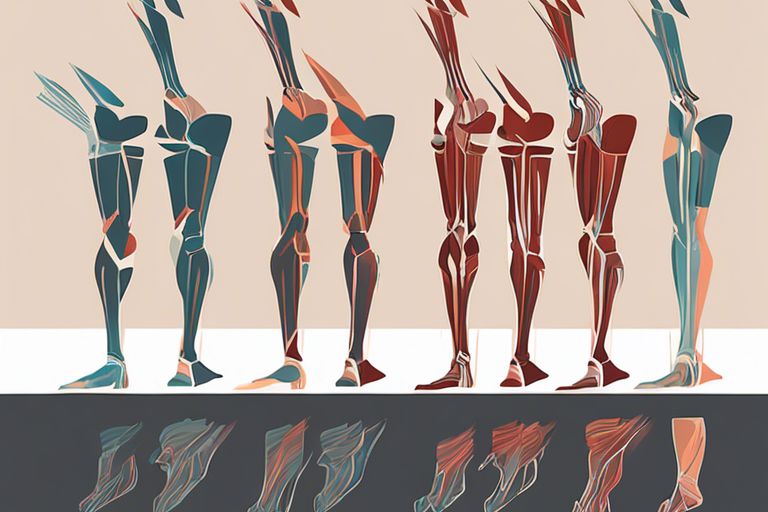Have you ever considered the impact that walking at various speeds can have on your overall health and well-being? Many people believe that walking at a brisk pace is the only way to experience the benefits of physical activity, but that is not necessarily the case. In fact, there are several positive reasons why you should vary the pace of your walks. By incorporating different speeds into your walking routine, you can challenge your body in new ways and target different muscle groups. This not only helps to improve your physical fitness, but it can also reduce your risk of injury and enhance your mental well-being.
Physiological Benefits of Walking
To understand the benefits of walking at different paces, it’s important to consider the physiological effects it has on your body. Walking is a low-impact exercise that can have a significant impact on your overall health and well-being. By varying your walking pace, you can target different physiological systems in your body, reaping various benefits from each.
Steady Pace Walking
Walking at a steady pace can be beneficial for improving cardiovascular health. When you walk at a moderate, steady pace, you are able to increase your heart rate and improve blood circulation throughout your body. This can help strengthen your heart and improve your cardiovascular endurance. Additionally, steady pace walking can also help to lower your blood pressure and improve your overall cardiovascular health. It is a great way to strengthen your heart and reduce the risk of developing heart-related diseases.
Brisk Pace Walking
Walking at a brisk pace can offer even more benefits for your cardiovascular health. When you walk at a brisk pace, you challenge your cardiovascular system even further, increasing the intensity of the workout. This can lead to greater improvements in your cardiovascular endurance and overall fitness level. Additionally, brisk pace walking can also help you burn more calories, aiding in weight management and overall health. By engaging in brisk pace walking, you can also improve your lung capacity and increase your body’s oxygen uptake, leading to improved overall fitness.
Psychological Effects of Varied Walking Paces
Some of the most significant benefits of walking are related to the psychological effects it has on your mind. Whether you prefer a leisurely stroll or a brisk pace, the speed at which you walk can have a profound impact on your mental well-being. Here, we will explore the psychological benefits of walking at different paces and how it can positively influence your mental health.
Mental Health and Moderate Walking
Moderate walking, which is typically defined as walking at a speed that allows you to hold a conversation without becoming breathless, has been shown to have numerous benefits for your mental health. Engaging in regular moderate-paced walks can reduce feelings of anxiety and depression and improve your overall mood. This is because moderate physical activity, such as walking, releases endorphins in the brain, which are often referred to as “feel-good” hormones. These endorphins can help to alleviate symptoms of stress and lift your spirits, providing a natural and effective way to support your mental well-being. Furthermore, incorporating regular moderate walks into your routine can also help you to manage your emotions better and improve your overall mental resilience.
The Impact of Fast-Paced Walking on Stress
On the other hand, fast-paced walking can also have significant psychological benefits, particularly when it comes to managing stress levels. When you walk at a faster pace, your body experiences an increased heart rate and improved circulation, which in turn can help to reduce stress and tension in your body. Additionally, fast-paced walking can help you to clear your mind and focus on the present moment, promoting a sense of mindfulness and relaxation. This type of activity can be especially beneficial when you are feeling overwhelmed or anxious, as it provides an outlet for your pent-up energy and allows you to channel your emotions in a productive way.

Walking Paces and Weight Management
For many people, walking is an accessible and easy way to manage weight. No matter your fitness level, walking at different paces can have a significant impact on your weight management journey. Whether you are looking to shed a few pounds or maintain a healthy weight, understanding the benefits of varying your walking pace can help you achieve your goals.
Walking Speed and Caloric Burn
When it comes to weight management, the speed at which you walk can make a difference in the number of calories you burn. Walking at a faster pace, such as brisk walking, can help you burn more calories in a shorter amount of time. This can be beneficial for weight loss as it increases your overall energy expenditure and can contribute to a caloric deficit, which is necessary for losing weight. However, it’s important to note that walking at a slower pace also has its benefits, especially for those who are just starting out on their fitness journey or have physical limitations.
Pacing Strategies for Optimal Weight Loss
When it comes to optimal weight loss through walking, it’s essential to incorporate a variety of pacing strategies into your routine. Mixing up your speeds during a walk, such as incorporating intervals of faster and slower paces, can help elevate your heart rate and increase calorie burn. Additionally, focusing on improving your overall endurance through longer, steady-paced walks can also contribute to weight management. Finding a balance between different pacing strategies can be key to seeing the results you desire in your weight management journey.
Considerations for Different Populations
Keep in mind that walking at different paces can have varying impacts on different populations. It’s important to consider the specific needs and capabilities of different groups when discussing the benefits of walking at different speeds.
Walking Paces for the Elderly
For the elderly, walking at a slower pace can be beneficial in improving cardiovascular health and reducing the risk of falls. However, it’s essential to take into account any mobility issues or conditions that may affect their ability to walk at a faster pace. Slow and steady walking can help maintain independence and improve overall well-being for the elderly. Always consult with a healthcare professional to determine the most suitable walking pace for older individuals, considering their specific health conditions and limitations.
Tailoring Walking Paces for Athletes
When it comes to athletes, varying walking paces can be used as part of a training regimen to enhance performance. Walking at a brisk pace can serve as active recovery for athletes, promoting blood flow and aiding in muscle recovery. On the other hand, walking at a slower, steady pace can be beneficial for endurance training. It’s important for athletes to tailor their walking paces based on their specific training goals and the demands of their sport. The right walking pace can help prevent injuries and improve overall athletic performance. However, it’s crucial to avoid overtraining and to listen to your body’s signals to avoid pushing yourself too hard.
Benefits of Walking at Different Paces
With this in mind, it’s clear that there are numerous benefits to varying your walking pace. By incorporating intervals of brisk walking and slower, more leisurely strolls, you can improve cardiovascular health, burn more calories, and strengthen different muscle groups. Walking at a faster pace also helps to increase your overall fitness level and can have a positive impact on your mental well-being. By adapting your walking pace, you can challenge your body in new ways and continue to see progress in your fitness journey. So, the next time you head out for a walk, consider alternating between different paces to maximize the benefits of this simple yet effective form of exercise.




